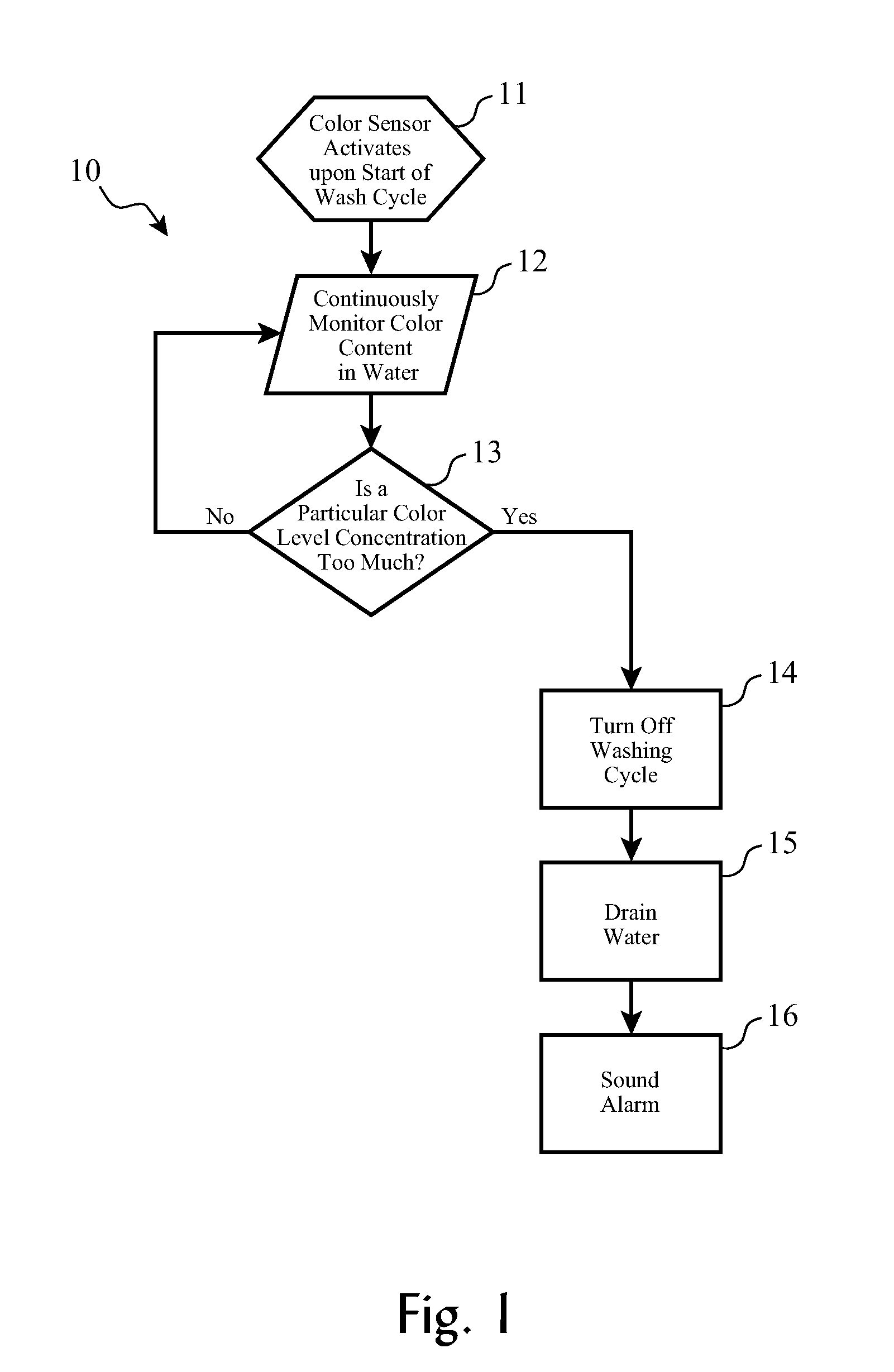Control of washing machines using color sensors
a technology of color sensors and washing machines, applied in the direction of electric controllers, automatic control, instruments, etc., can solve the problems of increasing the problem of color bleed, label failure, and inadequate address of clothes washing technology, so as to reduce or stop color bleed, reduce, stop, or minimize damage.
- Summary
- Abstract
- Description
- Claims
- Application Information
AI Technical Summary
Benefits of technology
Problems solved by technology
Method used
Image
Examples
based embodiments
Service-Based Embodiments
[0082]Alternative embodiments of the present invention include some or all of the foregoing logical processes and functions of the invention being provided by configuring software, deploying software, downloading software, distributing software, or remotely serving clients in an on-demand environment, to provide the logical control processes of the advanced washing machine.
[0083]Software Deployment Embodiment. According to one embodiment of the invention, the methods and processes of the invention are distributed or deployed as a service to by a service provider to a client's computing system(s).
[0084]Turning to FIG. 3a, the deployment process begins (3000) by determining (3001) if there are any programs that will reside on a server or servers when the process software is executed. If this is the case then the servers that will contain the executables are identified (309). The process software for the server or servers is transferred directly to the servers ...
PUM
 Login to View More
Login to View More Abstract
Description
Claims
Application Information
 Login to View More
Login to View More - R&D
- Intellectual Property
- Life Sciences
- Materials
- Tech Scout
- Unparalleled Data Quality
- Higher Quality Content
- 60% Fewer Hallucinations
Browse by: Latest US Patents, China's latest patents, Technical Efficacy Thesaurus, Application Domain, Technology Topic, Popular Technical Reports.
© 2025 PatSnap. All rights reserved.Legal|Privacy policy|Modern Slavery Act Transparency Statement|Sitemap|About US| Contact US: help@patsnap.com



